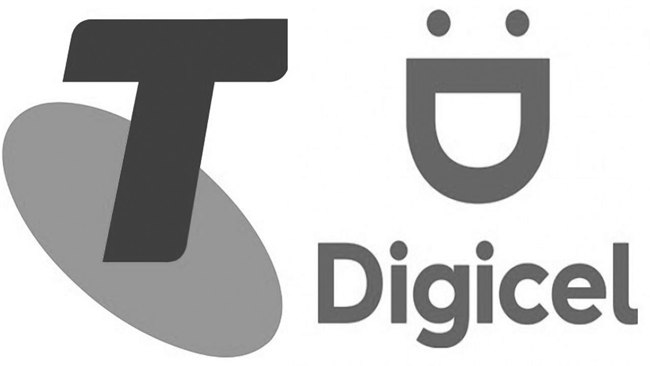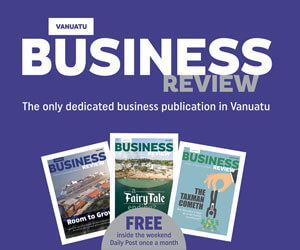Digicel Telstra deal was an off again, on again affair, Treasury documents reveal
January 29, 2022 11:34 pm | Posted in Business News | Share now TwitterFacebook
A $1.9 billion deal for taxpayers to fund Telstra to buy a key Pacific telecommunications company – to stop
China getting it – may have been close to falling through.
Previously unreleased documents alluded to delays and false starts in the process to buy Digicel Pacific as different
departments and ministers — including the Trade Minister Dan Tehan, Finance Minister Simon Birmingham, Treasurer
Josh Frydenberg and Cabinet — had to sign off on the deal. “Just flagging that this issue looks like
the letter and transaction are on again,” assistant secretary of the international economics and security division at
Treasury, Cate Rogers, emailed just before 6:00pm on October 20.
Key points:
• Taxpayers funded Telstra $1.9
billion to buy the Pacific’s
biggest telecommunications
company
• Telstra contributed much less,
but now owns 100 per cent of
Digicel Pacific
• FOI documents appear to
show the deal hung in the
balance
“I have let DFAT [the Department of Foreign Affairs and Trade] know that we won’t ask the Treasurer to sign anything
until we have confirmation that this is actually happening this time.” One of the contentious elements was the
cost.
In an announcement to the stock exchange on October 25, Telstra revealed it contributed just $US270 million (nearly
$380 million) to the $US1.6 billion ($2.24 billion) total purchase price but will own 100 per cent of the company’s ordinary equity.
The federal government’s Export Finance Australia agency stumped up the remaining $US1.33 billion through cheap
non-recourse loans and “equity-like securities”, leaving Telstra with minimal commercial risk.
Strategic purchase
Digicel Pacific serves countries including Papua New Guinea, Fiji, Nauru, Samoa, Tonga and Vanuatu with mobile
connections and internet data.
It dominates the Pacific and is the number one provider in the countries listed, except for Fiji where it is second-placed in the market.
When Irish billionaire Denis O’Brien looked to sell the company, which had been making around $300 million in profit annually, its strategic importance to Australia was obvious.
At the time, analysts flagged the Australian government could purchase the company, largely to stop China from
doing the same thing.
“Australian officials were concerned about whether a Chinese company or potentially a Chinese state-owned
entity might look to buy Digicel’s Pacific arm,” Amanda Watson, an expert in Pacific communications at the Australian
National University, told the ABC at the time.
“There were some geopolitical and geostrategic concerns about a Chinese company owning a major
telecommunication company in the Pacific region, which is of course so close
to Australia.”
The sensitivities have parallels with the treatment of Chinese telecommunications firm Huawei.
That company was banned from involvement in the National Broadband Network (NBN), a ban maintained even
after the government changed in 2013.

Five years later, Huawei was banned from taking part in the rollout of 5G mobile infrastructure, on national security
concerns.
Digicel Pacific uses a 4,700km undersea cable from Sydney, largely funded by the Australian government in 2018 in an
effort to prevent PNG and the Solomon Islands from using Huawei for the project.
But when the deal went through in late October, Mr Tehan brushed off questions about the influence of China on the
decision.
“The thing that was in the forefront of the government’s mind is that we continue to see quality investment in the Pacific. That’s what drove the government’s decision making,” he told the ABC.
Fast deal
After months of discussion and false starts, the final deal seems to have come together quickly. Documents from inside Treasury, obtained using the Freedom of Information (FOI) process, show a one-day process as approval was sought from different ministers involved.
The morning after the deal was back “on”, Ms Rogers updated Luke Yeaman, deputy secretary of the macroeconomic
group, and Vicki Wilkinson, first assistant secretary of the international economic and security division.
Three other Treasury officials were on the communication, but their names were redacted in documents received by the ABC.
The email appears to reference the Finance Minister, Trade, Tourism and Investment Minister’s Office, the Treasurer’s Office and a ‘minsub’ – a ministerial submission, but Treasury has not confirmed if this is accurate. “The letter has been signed by the FM and is currently with the TTIMO. We are told it should arrive in the TO later today.
We’ll send up a new minsub in the next couple of hours. We haven’t changed the letter, but the submission will outline the changes that led to the delay,” Ms Rogers emailed.
Through the afternoon, emails suggest the signed contract moved from the Treasurer’s office to the Trade Minister’s. An unsigned copy was circulated on email and by a form of communication redacted in the documents. The signed copy was handled in person.
“It will be walked from office to office,” Ms Rogers added. By 3:00pm it was done.
“We have updated the ministerial submission to reflect last minute changes to the transaction,” Ms Rogers wrote.
“We understand that the letter will be walked around once signed from the Trade Minister’s office. I understand that they have been in contact.”
Last minute analysis
While the emails describe last-minute changes, a search for Treasury analysis of the changing deal came up empty.
A search for Treasury reports noting Digicel in the fortnight before the transaction – and the day after it was announced – was refused because Treasury “holds no documents with the scope of your request”.
“I arranged for officers in my division to search Treasury records for material relevant to your request. These searches included searches of emails and Treasury’s file management system. I am satisfied that no such documents exist,” Jim Hagan, chief adviser of the international economics and security division of Treasury wrote in refusing the request.
This does not suggest that no analysis was done by Treasury, just that it was not captured in the FOI application.
It also does not capture analysis that may have been conducted by other departments or agencies.
One document was not released because it went before Cabinet and is exempt from FOI. Taxpayers will get to read it when Cabinet papers are released, in 20 years’ time.
How you know this
The Freedom of Information (FOI) process allows anyone to request documents from inside government departments and agencies.
You can ask for documents – such as emails, reports or data – about yourself or topics of interest.
Applications are free, but charges may be applied for processing the request.
Treasury charged the ABC $202 for access to the documents that informed this report.

Source: ABC Australia










